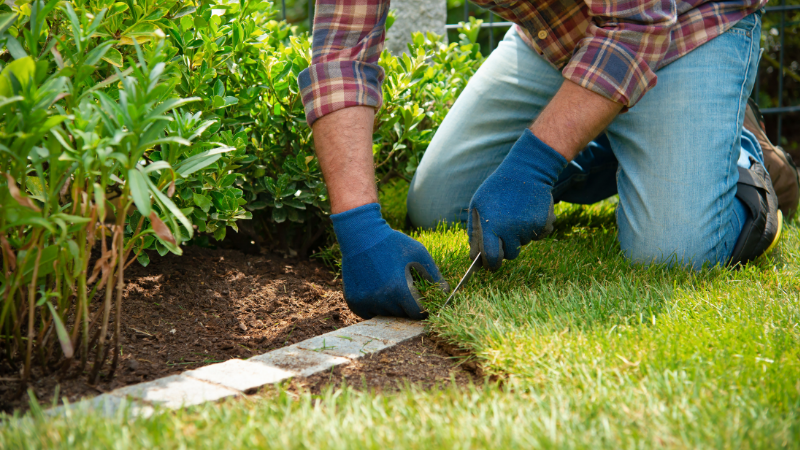Installing a new lawn can be a daunting task. There are so many things to consider before starting the project. How do you prepare the soil? What kind of grass seed should you use? These and many other questions pop into your mind when you think of your new lawn project.
It’s no surprise that you get excited about the idea of installing a new lawn. A well-maintained lawn is ideal for homeowners because it adds value to their homes. It also provides an excellent place for family members to relax and enjoy outdoor activities.
If you’re ready to revamp your outdoors with a new turf installation, here are eight pro tips to help you get your project rolling.
1. Select the right type of grass
The first step is to select the grass seed species that can tolerate the amount of sun exposure in your garden and the climate in your area. It’s also best to consider how much moisture your lawn will receive. Depending on your location, you might need a grass type to withstand drought. Lastly, don’t forget to consider the foot traffic that your lawn will get exposed to.
For example, Buffalo grass varieties have dense growth habits allowing them to thrive and predominate weeds even in salty, sandy, or high-alkaline soil conditions.
This warm-season grass is known for its luscious green colour and soft texture that feels good underfoot. It can also tolerate 60% to 70% shade, is low in maintenance, and doesn’t demand a lot of water, making it a top choice for most Australian property owners.
2. Start with a healthy soil
After choosing the perfect grass for your lawn care project, the next step is to ensure that your soil has adequate levels of organic matter and nutrients. If your soil lacks these two things, you’ll need to add them before planting grass seed.
You can add composted manure or other organic material to your soil. It’ll help improve its structure and make it easier for the grass to take root.
A study explained that adding organic matter to soil helps improve its quality by retaining moisture, giving a crumbly structure, resisting soil compaction, and containing nutrients released slowly over time. Roots need oxygen to breathe, and this is why you should add some organic matter to your soil.
3. Use a weed-free area
Ensure that you remove the weeds in the area where you plan to install your new lawn. Doing so ensures that you don’t accidentally introduce weeds into your new lawn.
Weeds, grass, and garden plants compete for space, water, light, and soil nutrients in your garden. Among these, weeds are the ones that can take over fast, and they look bad, too. Plus, they become breeding grounds for disease and insects. If not given enough attention, one weed can thrive and rob your precious grass of the nutrients it needs from your garden.
If an installation site is infested with perennials or undesirable grasses, you need to get rid of them before you lay down sod. You can use a rototiller or dig out any existing plant roots that might interfere with your new lawn.
4. Clean the area
Another thing you should consider is removing all trash in the area, including wood, dried leaves, rock, concrete, pipe, or any construction scrap, before the installation. These can interfere with the water movement and the root growth of your turf.
If your property is newly constructed, remind the builder not to dump waste, such as concrete, paint, and construction debris, in the area where you plan to install your new lawn. You might also want to remove tree stumps that might decay and leave holes in your yard.
5. Measure how much turf you need
The next part of the process is identifying how much grass you need. You need to prepare a sketch of your site. Determine the set of units you are measuring in, and don’t change halfway through. Most turf producers use metres and millimetres, so work in those if you’re comfortable.
You may use a tape measure to take the dimensions of your lawn. Measure twice and double-check your calculations before finalising how much turf to install. It’s best to make a 3% to 5% allowance to the amount you calculated for cutting in and another 5% to 10% for contingencies.
6. Get the right tools and materials
Aside from all the preparations mentioned above, it would help if you also had the right tools to install a new lawn. Many different tools can help you install a lawn, but you need to choose carefully. Not all tools work well for the same situation, so make sure that you use the correct tool for the job.
When installing a lawn, you need to use suitable materials. You can use either sod or topsoil. Sod is great for small areas, while topsoil works better for larger areas. Both options come with their own set of benefits and drawbacks.
7. Use mulch
Mulch helps keep weeds down and adds nutrients back into the soil over time. There are many different types of mulches out there, but straw is probably the best option. Straw has been shown to increase water retention and reduce weed growth.
Experts prefer organic mulches over the others because they can provide moisture and nutrients to new plants as their roots extend into areas with ample water.
Organic mulch is also free of synthetic chemicals, pesticides, or fertilisers that may leach into groundwater. Mulching with wood chips or shredded leaves is a good choice, but you’ll need to replenish them every once in a while.
8. Water well
It’s essential to keep your lawn well-watered throughout the summer months. However, don’t overdo it. Too much water can cause your grass to become weak and susceptible to disease. Instead, water your lawn once or twice per week during the hot season.
Also, you’ll want to make sure that you’re watering your lawn properly. Over-watering leads to root rot and other issues. On the other hand, under-watering causes the grass to die off. Ensure that you’re using a sprinkler system to set the water needed for each lawn area.
Final thoughts
Installing a new lawn is an exciting process, but many steps are also involved. Don’t rush through the project without planning. Take your time and follow these eight pro tips when installing a new lawn. When in doubt, reach out to a professional for help. Doing so will lead to a healthier, more beautiful garden.







